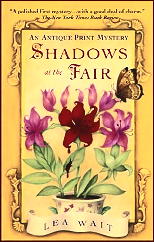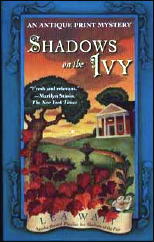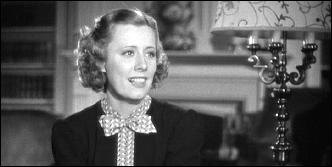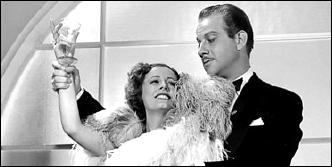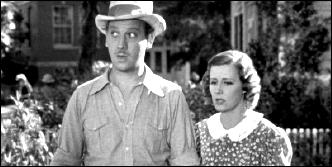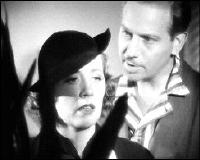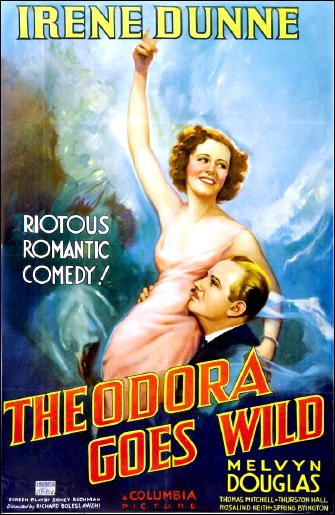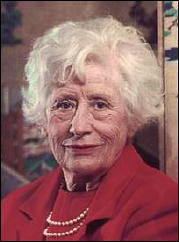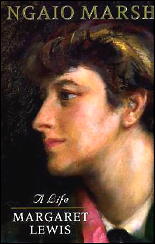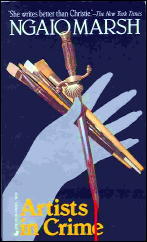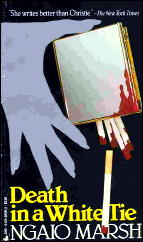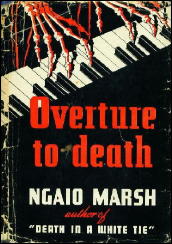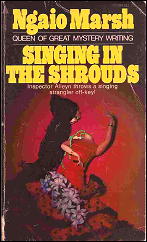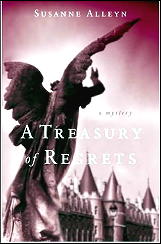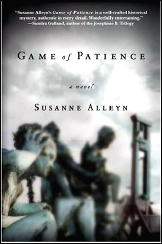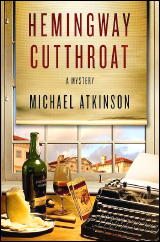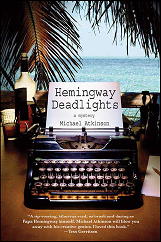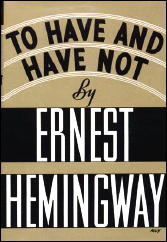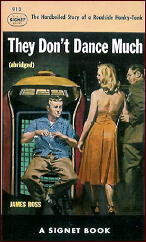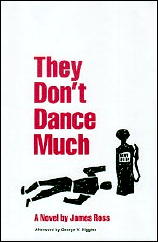Con Report: PULPFEST 2010
by Walker Martin
I’m just recently back from one of the most enjoyable four days in my life as a collector. It’s true. I only got four hours of sleep each night and I ate and drank beer to excess, but I hung out with the greatest group of collectors and happily wallowed in a sea of pulps, books, vintage paperbacks, and original pulp art paintings.
Since I was going to leave for the convention on Thursday, I started to pack up on Wednesday the pulps that I was going to sell at my table. As I sorted through the hundreds of issues I came to the horrifying realization that I simply could not bear to part with any of them, so I put them back on the shelves and decided to just sell canceled checks from the Popular Publications and Munsey files and a box of DVDs. As usual the checks sold well.
The last few years I’ve driven out to the pulp conventions with Steve Kennedy, a NYC art dealer who is a not an early riser. Thursday morning at 5:00 am, I began the usual ordeal of getting Steve out of bed and into the car so that we could be on the road by 6:00.
Nine hours and 500 miles later we arrived at the Columbus, Ohio Ramada. Though it was only 3:00 pm, pulp collectors were already showing up and several rang my room to see when we could all get together. Within a couple hours, several of us were chowing down the hotel restaurant food.
I’ve heard several complaints about the hotel food and the lack of restaurants within walking distance. Frankly, I don’t care if the food or restaurants are good, bad, or indifferent. I’m there for the books, pulps, and artwork.
Most mornings I ate breakfast in the hotel with such crazy collectors and longtime friends as Scott Hartshorne, Nick Certo, Dave Scroggs, Ed Hulse, and Digges La Touche. The one breakfast that we ate at the Waffle House, I made the interesting discovery that Lollipops, The Gentlemen’s Club was next door. Some of us were going to visit to see if any of the girls were pulp collectors, but there was a Shriners convention also at the hotel and these guys were real party animals without the distraction of books and pulps. Maybe next year…
The hotel was a real bargain and despite the lack of nearby restaurants, I’ve never seen room rates so low for a hotel which also provided a large dealer’s room, hospitality suite, and meeting rooms. In fact the lack of restaurants is not really a problem at all because the hotel has a nice 15 person shuttle van that will take you and pick you up from any place in town.
The Hospitality room was excellent, full of beer, soda, and snacks. Also full of knowledgeable collectors talking about pulps into the early morning hours. I would like to thank the great guys who are responsible for stocking the beer. I’m very thirsty after a long day of breathing in pulp chips and talking about the joys of collecting to just about anyone who would stand still.
The dealer’s room this year was far larger than last year’s room with a lot of space between dealers. The attendance was even better that last year’s 350, reaching at least the 390 mark. This attendance of almost 400 is more than any that the old Pulpcons ever had.
I would place this year’s show as one of the very best I’ve ever attended, and I’ve been to almost all since the first one in 1972. I rank the 2010 PulpFest with the first Pulpcon in 1972 and the 1981 Cherry Hill event, where I scored over 10 pulp cover paintings for an average price of $200 to $400 each.
So many great collectors were there that I cannot mention them all. But I will mention two who have excellent blogs and websites that often mention pulps and paperbacks: Laurie Powers of Laurie’s Wild West and of course Steve Lewis of Mystery*File. Besides the PulpMags Yahoo group, these are the only two websites I make a point of visiting every day.
The evening panels were the best I’ve ever attended, though the Windy City Adventure panel was also outstanding. Friday night we had a panel on The Pulp Western with Guest of Honor William Nolan, Mike Nevins, Don Hutchinson, Laurie Powers, and Ed Hulse.
This type of panel never happened before because of the constant emphasis on such subjects as the hero pulps. Westerns once were extremely popular and were outsold only by the love pulps, so we need more discussions concerning the western pulps.
Also on Friday we heard William Nolan’s speech, Stephen Haffner on Leigh Brackett, and Tony Tollin on his favorite subject, The Shadow. During the day, I couldn’t drag myself away from the joys of the dealer’s room but I’ve been told that Mike Nevins gave an interesting talk concerning his new book, Cornucopia of Crime.
I managed to get an advance copy signed by Mike and can report it is a major publication, collecting many of his essays on mystery authors that he has written over the years.
As good as Friday was, Saturday was even better, with the business meeting, Munsey Award presentation, Black Mask panel, and the auction.
The Munsey Award was properly awarded to Mike Chomko but I didn’t hear presenter Tom Roberts mention why Mike was getting the award. Not only has he been one of the major members of the PulpFest committee (the others are Jack Cullers, Barry Traylor, and Ed Hulse), but he used to publish one of the very best of the pulp fanzines, Purple Prose.
It was a major disappointment when Mike had to suspend the magazine due to his medical studies and I tried to talk him out of it to no avail. Hopefully he will find the time to revive this great magazine. In addition he is the major dealer of pulp related books, selling just about every pulp reprint that’s available. We haven’t had such a dealer since the great old days of Robert Weinberg Books. Congratulations Mike.
The Black Mask panel ranks as one of the very best panels, right up there with the great Adventure panel at Windy City. During an hour Bill Nolan, Ed Hulse, John Wooley, and I managed to discuss every major period of the magazine and many of the writers and editors
Bill Nolan talked about the Joe Shaw years of 1926-1936 when the very best in hard boiled fiction was published; Ed Hulse covered an over view of the magazine and discussed the Fanny Ellsworth years of 1937-1940; I talked about the Ken White years in the forties and John Wooley discussed the post war period.
We also covered just about every major writer such as Hammett, Chandler, Carroll John Daly, Horace McCoy, Fred Nebel, Raoul Whitfield, Erle Stanley Gardner, Paul Cain, Merle Constiner, D. L. Champion, Robert Reeves, and Dale Clark, Butler, Norbert Davis, among others.
Perhaps many of the readers of this report will only recognize such famous names as Hammett, Chandler, Gardner, but believe me these other writers have been unjustly forgotten and some rank right up there with our favorite SF, western, adventure and mystery writers. I say “some” because we did have some critical things to say about Carroll John Daly and Horace McCoy.
The auction was very well attended and 142 lots went up for bids. Collectors managed to obtain such pulps as The Shadow, Golden Book, Frontier Stories, Western Story, Argosy, Popular, Thrilling Wonder, Adventure, Nick Carter, Pete Rice, Fantastic Adventures, Air War, Startling Stories, Captain Zero, Super Detective, Black Mask, Dime Detective, Detective Story, Flynn’s, Double Detective, Thrilling Adventures, Dime Mystery, G-8, Detective Tales, and many others.
The most interesting item was Walter Gibson’s typewriter, or at least one of them, with a letter of authenticity.
I obtained my usual pile of wants and interesting objects. I’m working on a complete set of Western Story, and I’m somewhere around the 1200 issue mark, so it’s getting very difficult to find the early issues I still need, but I found one from 1922.
I showed the issue to Laurie Powers and other collectors, and they must of thought I was crazy to be so happy about one issue of Western Story, but that’s the excitement you feel as you near the completion of a lifelong project.
Another find that impressed everyone was a 1940’s issue of Love Book. Normally you would think such a find to be of very little interest but over 30 years ago I obtained a love pulp cover painting showing a pretty girl typist smiling.
I’ve hunted decades for the magazine to go with the painting and had just about given up, thinking that I’d never locate the issue among the thousands of love pulps that were published. But at this convention while digging through rows of love pulps, I found not only the issue but a second one as well.
I proudly showed it to my pulp collecting pals who over the years had become bored with my constant whining about finding the love magazine to go with the painting. They will now be pleased to hear that now I will shut up about the subject.
I also obtained an original cover painting from Detective Fiction Weekly and an interesting piece of artwork showing the Yellow Peril danger of World War II.
John Locke’s Off Trail publications just put out an excellent two volume collection of Ghost Story fiction. It also contains a history of the magazine and original research on the writers. This is a must buy because the original magazines are so rare.
I bought several of Tom Roberts Black Dog Book reprints. I especially am looking forward to reading the first volume of the best of Adventure magazine, edited by Doug Ellis. Also the first three or four of the Talbot Mundy library are out.
We are living in the Golden Age of pulp reprints and I saw plenty of tables packed with reprints by Black Dog Books, John Locke’s Off Trails, Altus Books, Age of Aces, Girosal, Stephen Haffner’s books, and others.
The new issue of Blood n Thunder made its debut and it’s a stunner, perhaps the best issue yet, 100 pages long, containing a long article by Tom Krabacher about Gordon Young, an unjustly forgotten writer. The issue is a celebration of Adventure‘s 100th birthday and also contains pieces by Ed Hulse on the Lady Fulvia series, a serial based on a W.C. Tuttle novel, and an article by Adventure editor Arthur Sullivant Hoffman on writing for the pulps.
There is also a long section titled, “The Campfire: Sumer 2010 Edition.” Reading this section will point you toward some of the best fiction published in Adventure. It’s sort of a “My Favorite Issue” discussion by such collectors as Doug Ellis, Tom Krabacher, Dave Scroggs, Brian Taves, Ralph Grasso, Digges La Touche, Ed Hulse, and myself.
Many years ago Doug Ellis published one of the great magazines about the pulps, Pulp Vault. I had hoped that the new issue would finally be available at PulpFest but Doug gave me the sad news that it was delayed.
When this issue is finally published it will be the greatest issue of a magazine ever published about the pulps. I understand it will be over 200 pages with an unpublished Virgil Finlay cover and full of interesting articles such as Mike Ashley’s article on Blue Book, over 15,000 words long. Reader and Collectors, this will be an issue worth waiting for!
I know I’ve left a lot out and perhaps other attendees can contribute comments or correct any mistakes. I would like to thank the committee members for all their hard work on this convention. I’m referring to Mike Chomko, Jack Cullers and his family, Barry Traylor, and Ed Hulse.
Also thanks to Chris Kalb for his work, John Gunnison for his voice in the auction room, Tony Davis and others involved with The Pulpster, and the collectors who stocked the Hospitality suite.
Fellow readers and collectors, this is not a convention to be missed. Start making plans for next year because we have to support this event with our attendance. If it wasn’t for these people, by now we would mourning the death of the summer convention, because the old Pulpcon was on its last legs.
